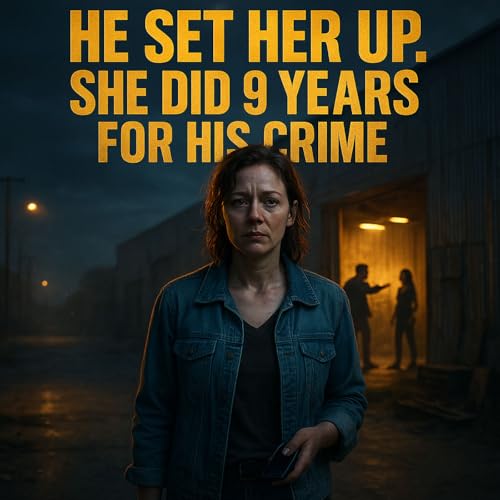This narrative presents a psychologically driven crime-drama centered on Janet Miles, a woman whose life becomes defined by trauma, coercion, and ultimately, the pursuit of self-redemption. Set primarily in East Baltimore and Glen Burnie, Maryland, the story traces Janet’s evolution from a hopeful young woman raised by a morally grounded grandmother to an adult ensnared in a destructive criminal partnership.
The story opens with a highly charged moment: Janet stands outside her former home at dusk, holding both a bottle of sleeping pills and a gun. Her emotional distress is palpable, shaped by years of regret, guilt, and internal conflict. Yet the memory of her young daughter interrupts her despair, igniting a small but crucial spark of hope. This juxtaposition of suicidal ideation and maternal instinct becomes the emotional axis of the story.
Janet’s backstory reveals a childhood shaped by hardship and loss. After her mother’s overdose, she was raised by Miss Ruby, a grandmother who instilled discipline, compassion, and the dream of becoming a nurse. Her early aspirations demonstrate strong moral grounding and a desire to escape generational cycles of instability. These formative qualities later heighten the tragedy of her descent.
Janet’s relationship with Dave Miles marks the turning point of her life. Initially charismatic, supportive, and ambitious, Dave embodies the illusion of stability and passion Janet longed for. Over several years, they build what appears to be a promising life together. However, beneath the surface, he gradually manipulates her into participating in petty crimes—first through fraudulent returns and later through more serious financial schemes. His emotional influence over her, combined with her desire to sustain their relationship, blinds her to the growing danger of their lifestyle.
The arrival of Nikki Stevens, Dave’s friend, intensifies Janet’s internal struggles. Nikki’s confidence and moral detachment both intimidate and intrigue Janet. Nikki’s presence not only fuels Janet’s insecurities but also normalizes the escalation of criminal behavior, leaving Janet increasingly conflicted between her love for Dave and her own ethical discomfort.
The narrative reaches critical intensity with the introduction of Big Mike, a dealer who offers Dave and his associates the opportunity to transport narcotics. This proposal marks the threshold between small-scale fraud and fully entrenched criminal enterprise. Janet’s instincts recoil, but emotional manipulation and fear of losing Dave paralyze her. Her moral conflict becomes the central tension of the story.
The pivotal climax occurs inside a grim warehouse where Big Mike details the drug-running operation. In this crucial moment, Janet experiences a profound internal shift. The pressures, betrayals, and the memory of her daughter converge, enabling her to reject the operation outright. Her refusal, delivered courageously despite Dave’s anger and Big Mike’s intimidation, signifies her awakening. It represents the first moment in which she chooses instinct, ethics, and motherhood over manipulation and adrenaline-fueled escape fantasies.
Her decision fractures the trio’s unity. Dave interprets her defiance as betrayal, revealing the depth of his self-interest. Nikki is caught between disbelief and resentment. Big Mike issues sinister warnings. Yet despite the danger, Janet chooses autonomy. She walks out of the warehouse—symbolically and literally stepping out of darkness—toward an uncertain but morally grounded future.
The final scenes depict her arrival at a local shelter, where she receives compassionate support. This setting represents both refuge and rebirth. As she explains her circumstances, the staff member reassures her that she can rebuild her life. The narrative closes not with triumph but with hard-won clarity. Janet envisions a better future for herself and her daughter, recognizing that the path to redemption is neither simple nor swift, but possible.
 Nov 16 202512 min
Nov 16 202512 min Nov 16 20258 min
Nov 16 20258 min Nov 16 20258 min
Nov 16 20258 min 9 min
9 min Nov 15 202547 min
Nov 15 202547 min Nov 14 202517 min
Nov 14 202517 min Nov 14 20258 min
Nov 14 20258 min

